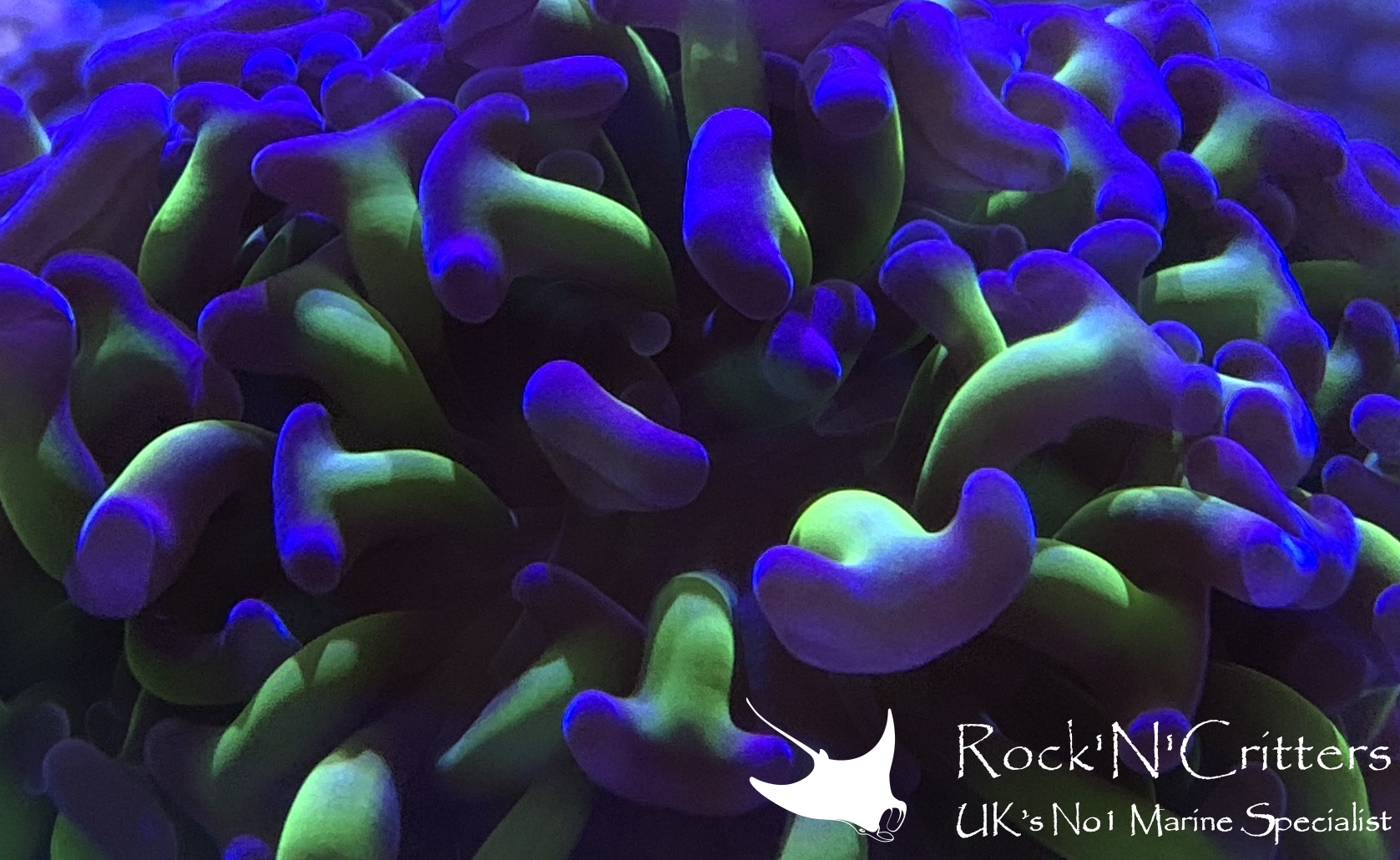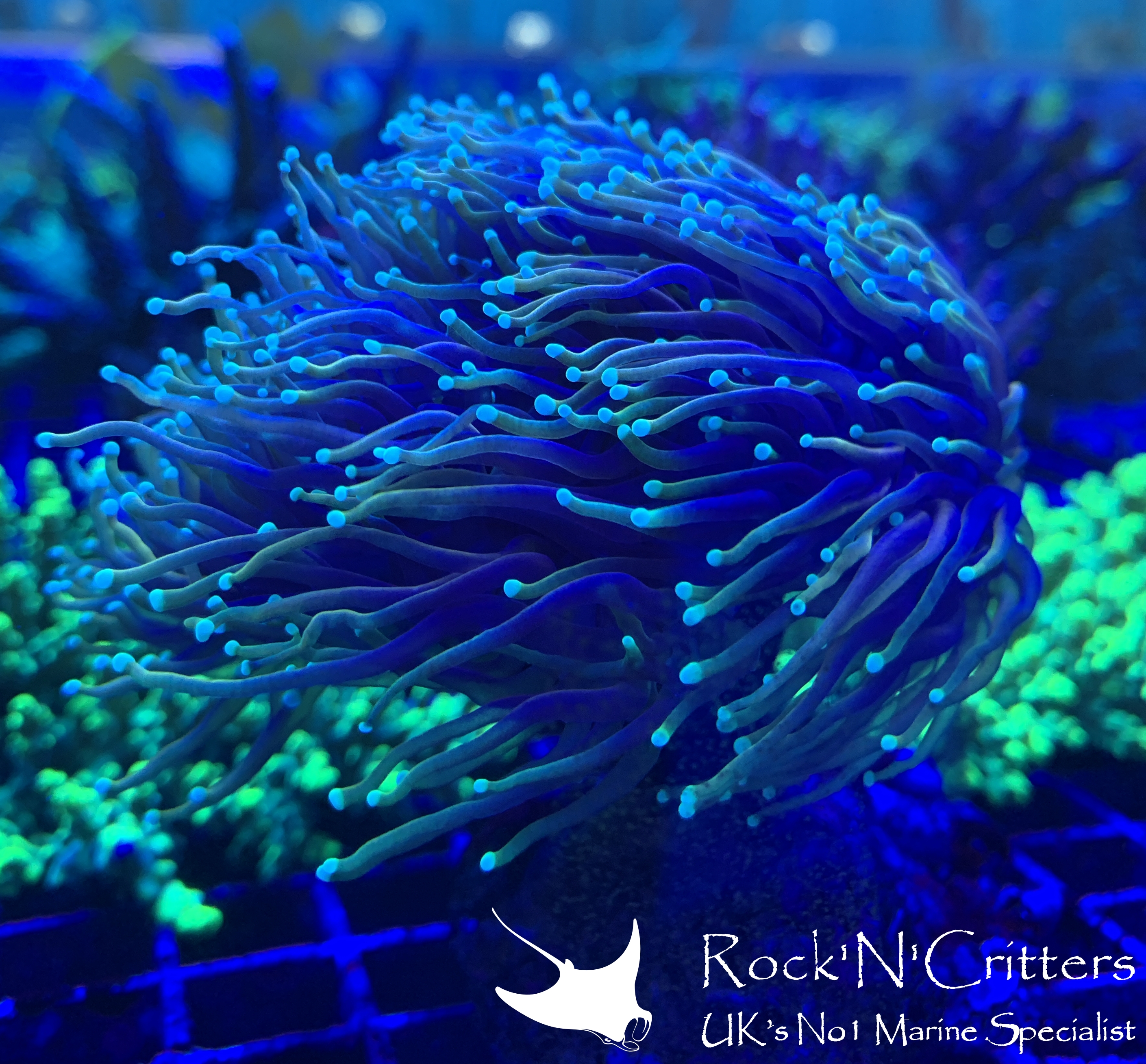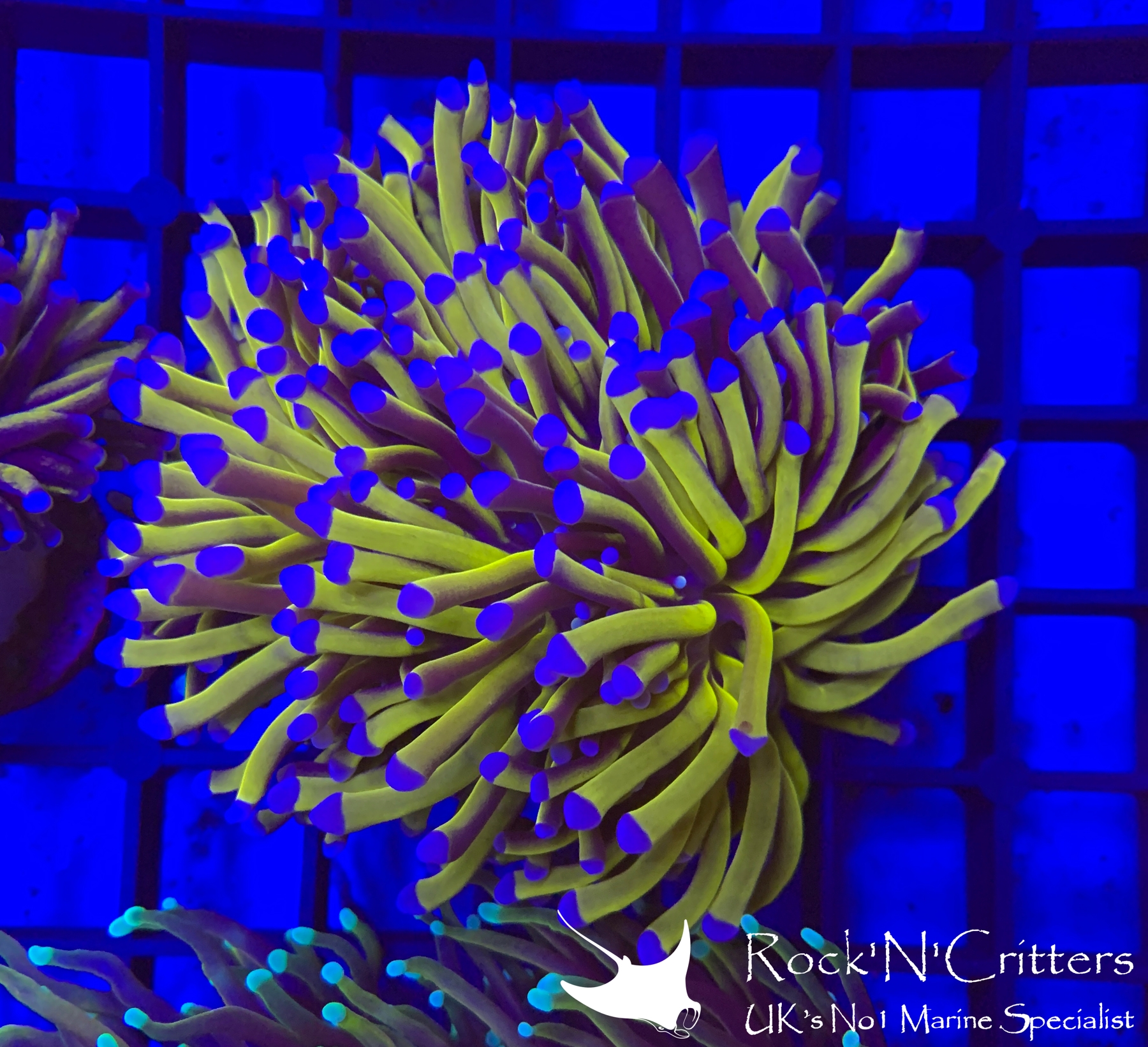
On the Coral Spotlight blog posts I'm going to pick a few corals that are in store and online. Some will be new arrivals and some are just nice pieces that I like or think deserve a bit of the limelight for a minute. Either way, here's a few corals for this month that I think are worth a look at, just click the coral name and it will take you to the RockNCritters online listing, enjoy!
Better late than never ey! This month's Coral Spotlight is all about Euphyllia because, well, they're awesome. Enough said? Or do you need some convincing? I'm sure you'll be Euphyllia Euphoric by the end of this Blog.
Euphyllia is a genus of Large Polyp Stony (LPS) corals and are broken down into species which can be roughly grouped three ways; Hammer corals, Torch corals and Frogspawn. There are two types of Hammer coral; Wall Hammer and Branching Hammer, which technically speaking are each sub species of the Euphyllia genus but it's often easier to just simply consider the three main types and then Hammers as having two growth types. They are photosynthetic so will get most of their energy needs from light. They can do well in pretty much all lighting conditions except extremely low light. In medium to low lighting they will tend to expand and inflate nicely to make the most of the limited light whereas under strong lighting you will likely see stronger colouration. Euphyllia will often have sweeper tentacles which they use to fend off nearby corals encroaching on their space and to also catch some food. All of a Euphyllia's tentacles will catch food up to roughly Mysis Shrimp size to feed on however. The feeding response from these coral can be really quick and strong. As soon as the tentacles make contact with a piece of food they will begin to retract to move the piece of food inwards towards the polyp mouth to be consumed. Whilst this can be quick, it is still often not quick enough to evade pesky cleaner shrimp looking for an easy meal, so if you're target feeding your Euphyllia it's often worth hanging around and making sure the coral takes and consumes the food to stop any other livestock from literally taking it right out of their mouths! As for those sweeper tentacles, its often worth keeping an eye on Euphyllia to make sure any sweeper tentacles are not making contact with neighbouring corals and when placing them on your reef make sure you give them some space from other corals. In a fight with other corals Euphyllia will likely win so beware when it comes to placing nice Acropora and the like!

Now the difficult thing to manage with Euphyllia is more often than not flow. The large fleshy polyps of this coral bring nice movement to the reef tank however too much flow can result in these fleshy polyps being battered about and damaged which then causes the coral to polyps to retract. The movement and colouration often means these corals are added to mixed reefs which is often where the flow dilemma is most obvious as you try to balance flow needs for both SPS and the likes of LPS. You'll often see Euphyllia in the bottom corners of mixed reef tanks for this exact reason, it's the best place in terms of light and flow. This isn't always the case though as every reef is different. My advice to you if you're considering adding Euphyllia to your reef is to study your flow and learn where the best position will be for the coral because the trouble with Euphyllia is also that they need time to settle in and time to react to changes in lighting and flow. It is thought that they do best in a rhythmic flow where the polyps will gently bounce back and forth, this type of flow can be very difficult to achieve in the aquarium but it is probably what we should be aspiring to achieve.
When it comes to picking out Euphyllia colonies and frags you really need to pay attention to the health of the coral. Unhealthy and damaged corals can take time to slowly die off so picking out a healthy specimen is really important for success in your reef tank. There are a couple of things to look out for when it comes to Euphyllia healthy which are;
1. Good polyp extension - Are the polyps out and extended? If it's a branching coral are all the heads showing good polyp extension? If not then it could be a couple of things, the coral could just be sulking a bit or if the lights have just come on/going off then it could be retracting for the night. There is a subtle but noticible difference I think between unhealthy retracted polyps and night time polyps, over time you may start to notice once you've seen a few ropey corals but for now, its just something to bear in mind. If you're not sure, combine your observations with the other points below to make an informed decision.
2. What are the other Euphyllia doing? - Are there other Euphyllia in the shop? How do they look? Are they on the same system/coral tray/light/flow etc? Are there dead or dying corals about? If there are then it could be a warning sign to give it a miss.
3. Skeleton - This is arguably the most tell telling sign of Euphyllia health. As Euphyllia grow they grow upwards and outwards and in the case of branching hammers, they sprout new polyps on the skeleton. Not all of the skeleton is 'alive' though. If you look at the head of a Torch Coral for example you will see a white fleshy head which looks almost like skin wrapped over the skeleton and then the skeleton below is the typical reef rock looking coral skeleton. This is the live and the legacy part of the coral. What you're looking for here is a good healthy looking white fleshy bit that covers the whole of the head and down the skeleton a little bit. When a coral is dying the white fleshy bit will often be receding back into the top of the skeleton/head. The other thing to look out for is if you're looking at Euphyllia frags just make sure that the white fleshy part hasn't been sliced into because if it has then the frag is unlikely to survive. In the case of Walling Hammers there is no option other than to cut into the white fleshy part in order to frag it. So you should make sure that the frag is healed over nicely and that the coral is building it's skeleton back up.
4. Brown Jelly - This is an instant red flag. A coral infected with Brown Jelly is unlikely to survive and is actually a threat to the other corals in the same system. Brown Jelly is as the name suggests, a brown jelly on the head of the polyp. If the coral is infected the Polyp will likely be dying off and looking pretty ropey. If you see this then avoid that coral!
Right, let's get back to what the Coral Spotlight is all about, looking at corals.
Left to right we have the Anti Freeze Torch, Atomic Torch and then the Two Tone Hammer Frag. The Anti Freeze Torch is a a luminous green with purple tips which looks really nice. If you give it time to grow into a multi-head colony then this is a real centre piece coral. It's a favourite of mine in my reef at home. The Atomic Torch has deep purple tentacles with light tips but most importantly is the green centre of the polyp which makes it 'Atomic'. Thirdly, I think the Two Tone Hammer is going to be the next addition to my reef at home but don't worry there's a few frags in store so plenty to go around. The Two Tone name comes from the hammer tentacles having breaks in the colouration which look almost as though they've been painted but then the paint has been scraped off in patches which may not sound desirable at first glance but actually, it's not an all that common look in corals and small unique'isms in this hobby is partly what makes it so special. So for that reason, I think it's worthy of the Spotlight.
 |
I don't think I could do a Coral Spotlight Blog post and not mention two very well known Torch variations which are very popular right now and they are the Gold Torches, namely the Australian 24K Golden Torch and the Indo Torch. The Big picture above is of a Indo Gold Torch Colony which is on the main coral table right now. They are something special and have a certain gravitas that collectors seek out. The Australian Gold Torch is something else all together though. Rather than having two tone golden tentacles like the Indo Torches seem to have, the Australian Torch tentacles are fully gold and with white tips. They are pretty special it has to be said. The big picture below is of an Australian Gold colony that was in the shop a few months ago, it is quite hard to get a decent photo with a smart phone which is why the tips are a bit over exposed and blue. In fact, at the bottom of the image you can see an Indo Gold Torch and how it compares to the Aus Gold Torch. The smaller tile pictures below that include a Gold Torch Frag in store right now though.
 |
Left to Right we have the Australian Gold Torch, Orange Frogspawn and Ultra Branch Hammer Frag. All of which are in store and on the website right now. If you like the look of the Aus Torch then there are two frags in store, one small and one large. The frag pictured is the large.
If you want to have a browse at all the Euphyllia in store right now though the easiest way to do it is to look up the LPS corals on the website here and then use the Genus filter on the left of the screen. Tick 'Euphyllia' and you'll be shown just the Euphyllia. Or alternatively, pop in to the shop and have a look around. The frags and colonies are split between the back coral trays and the main coral tray in the centre (that's where the Aus Gold Torches are).